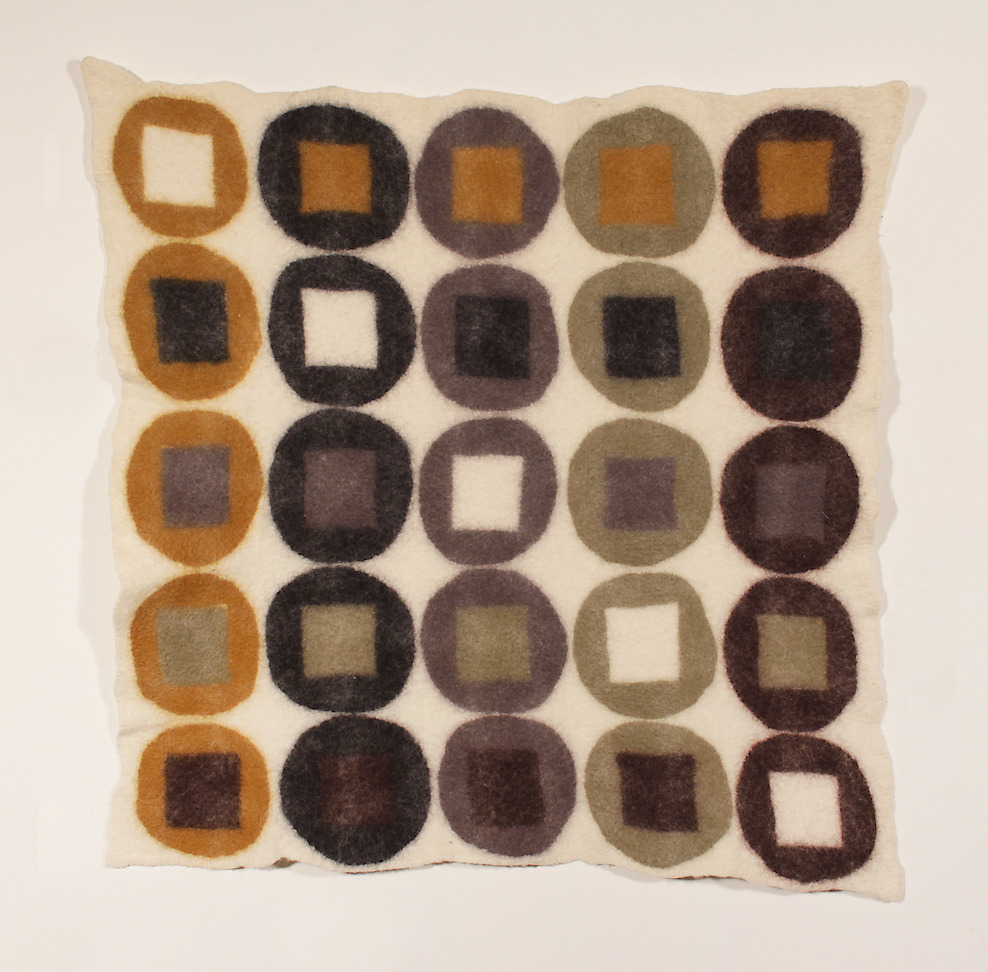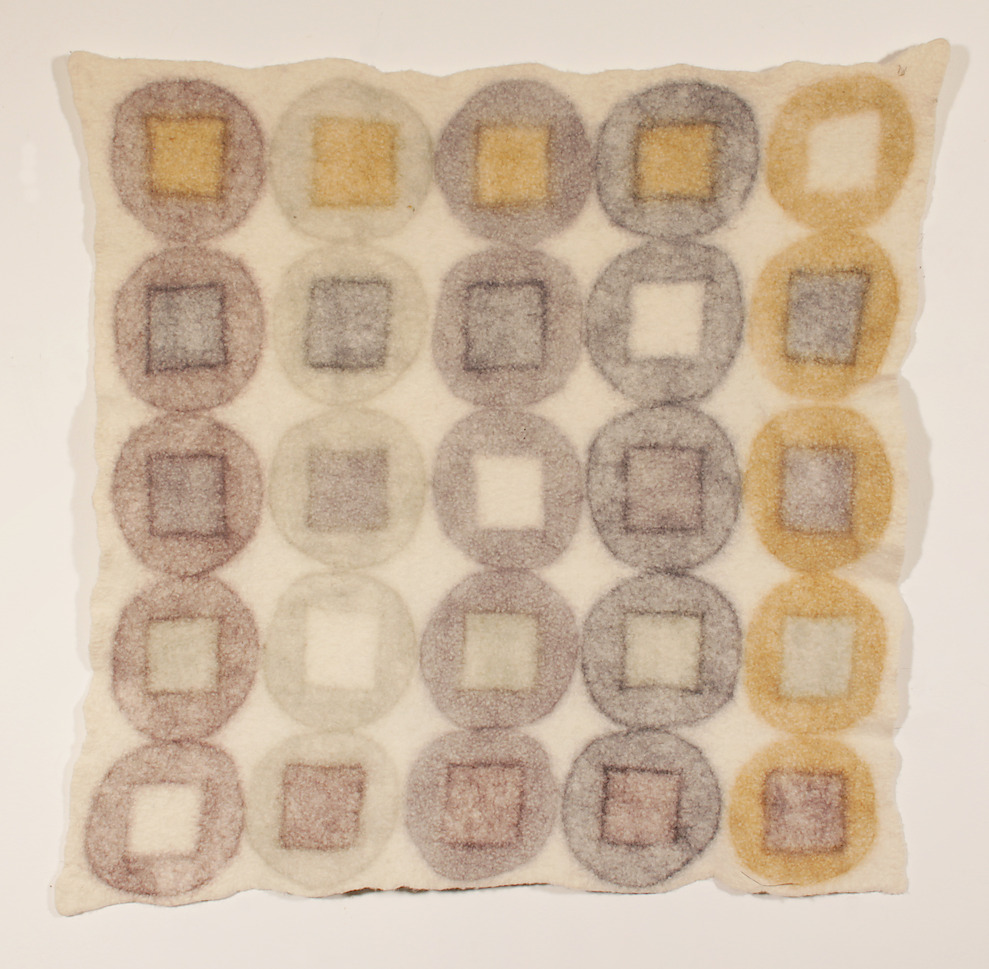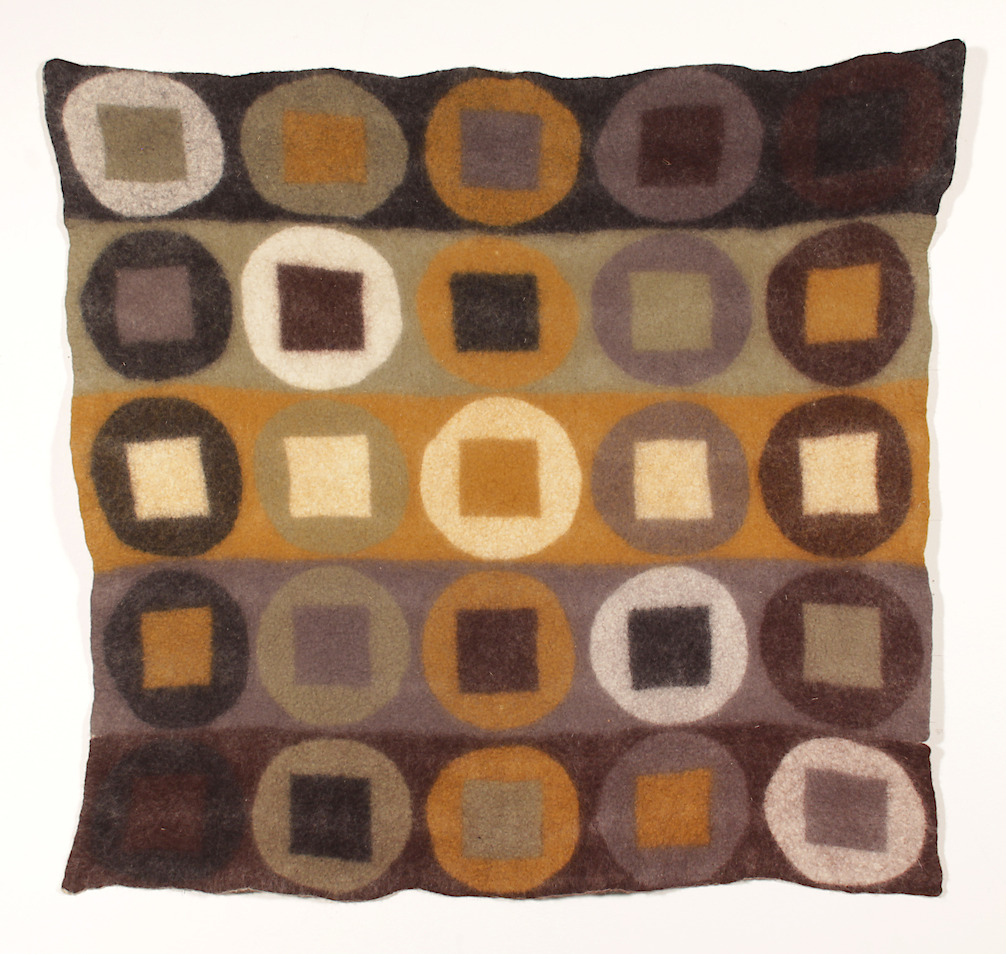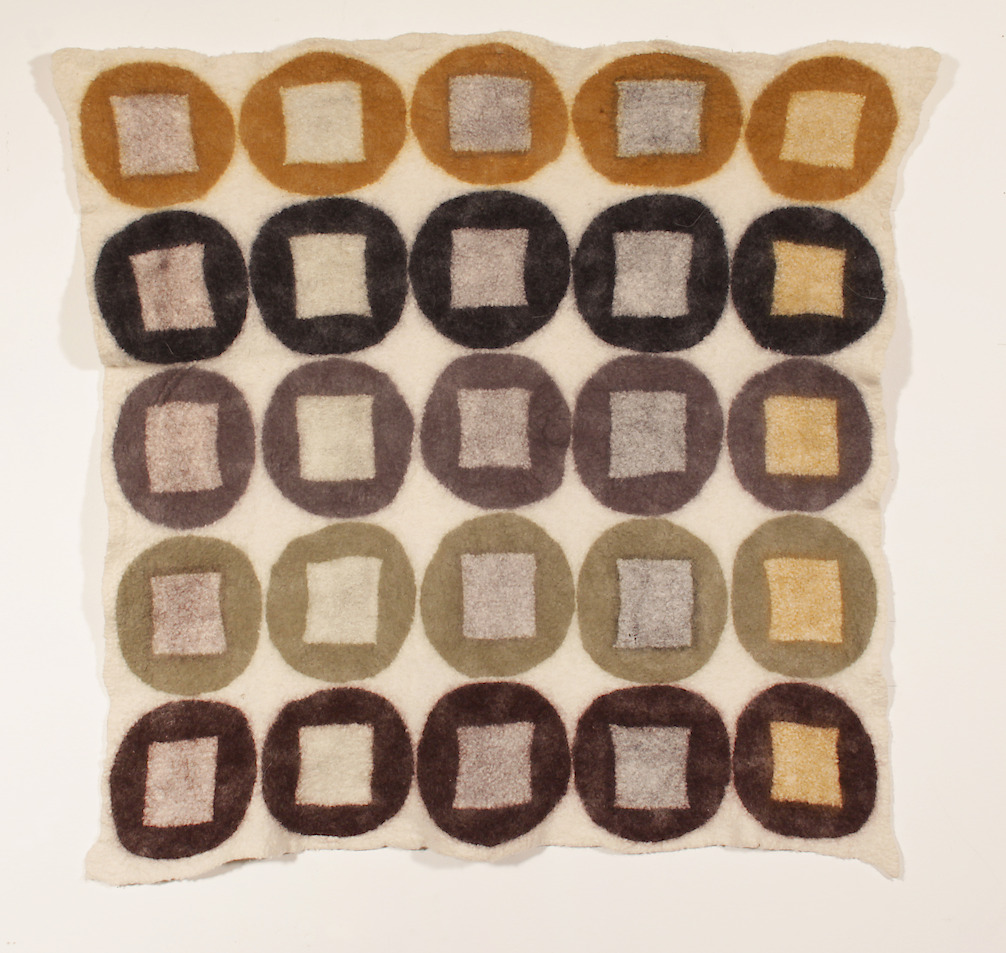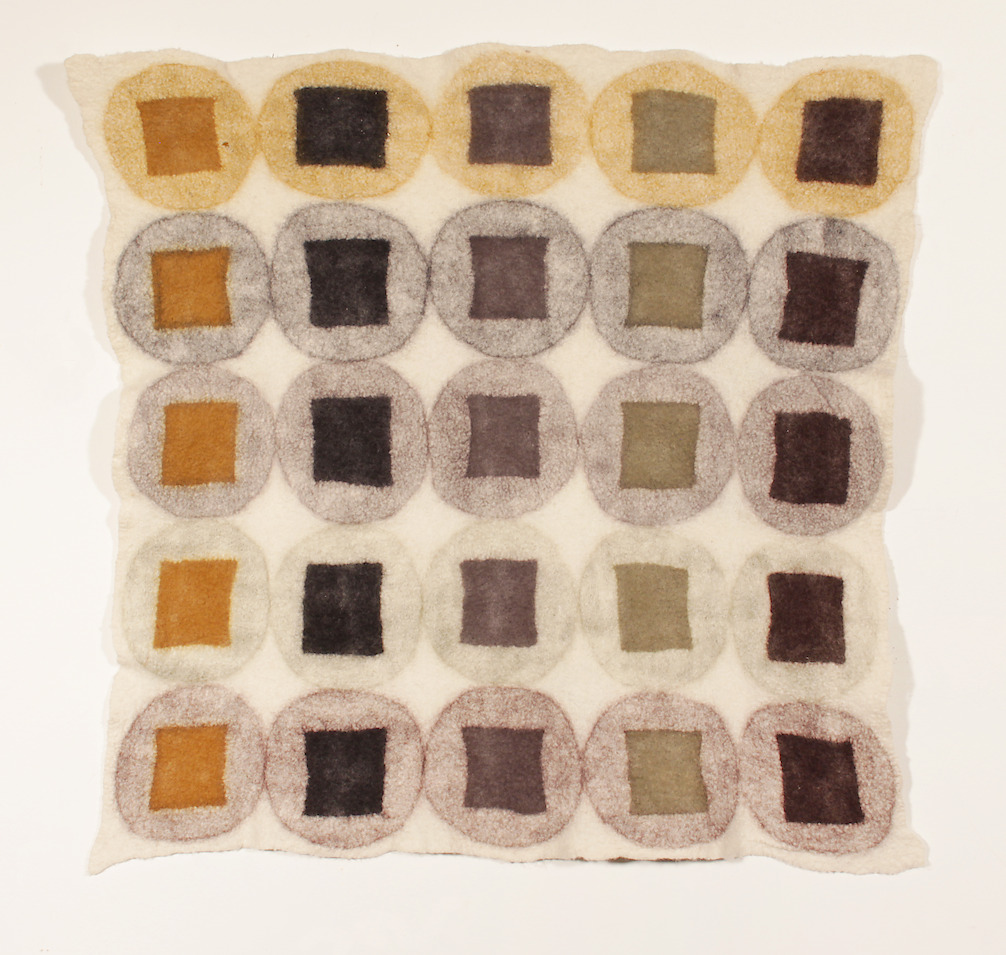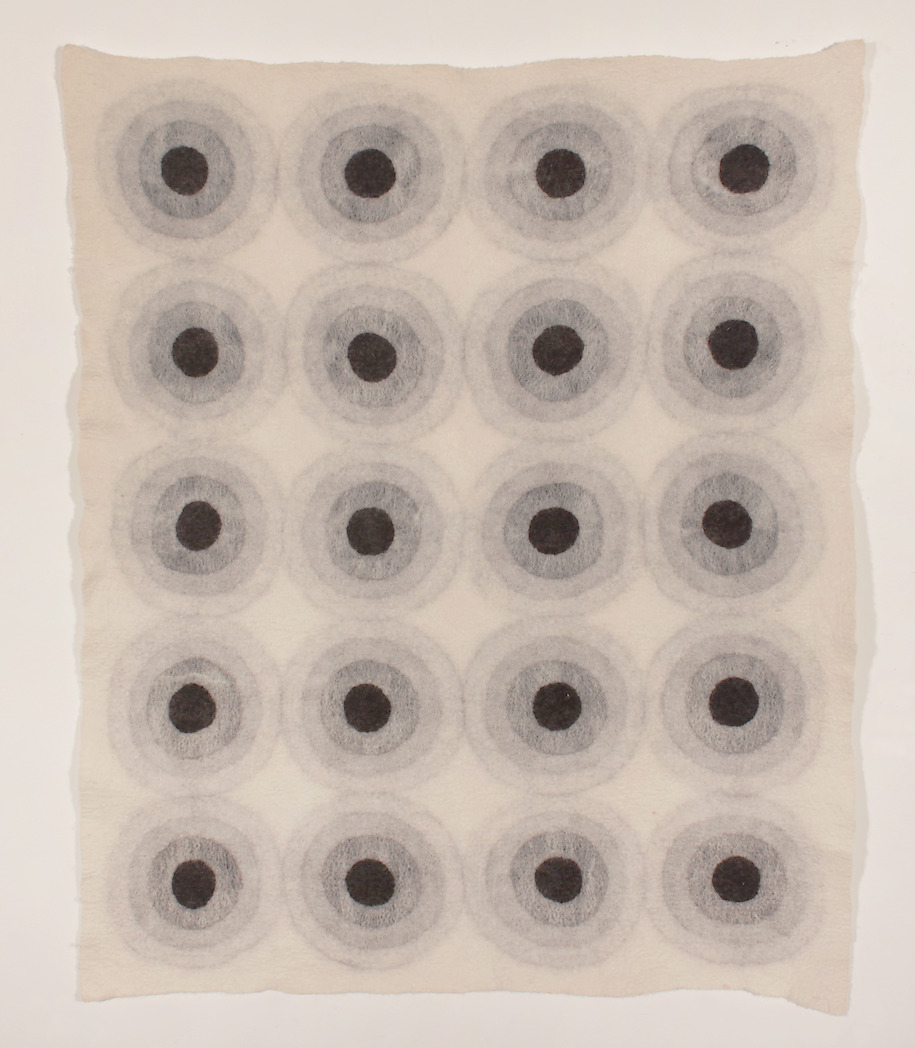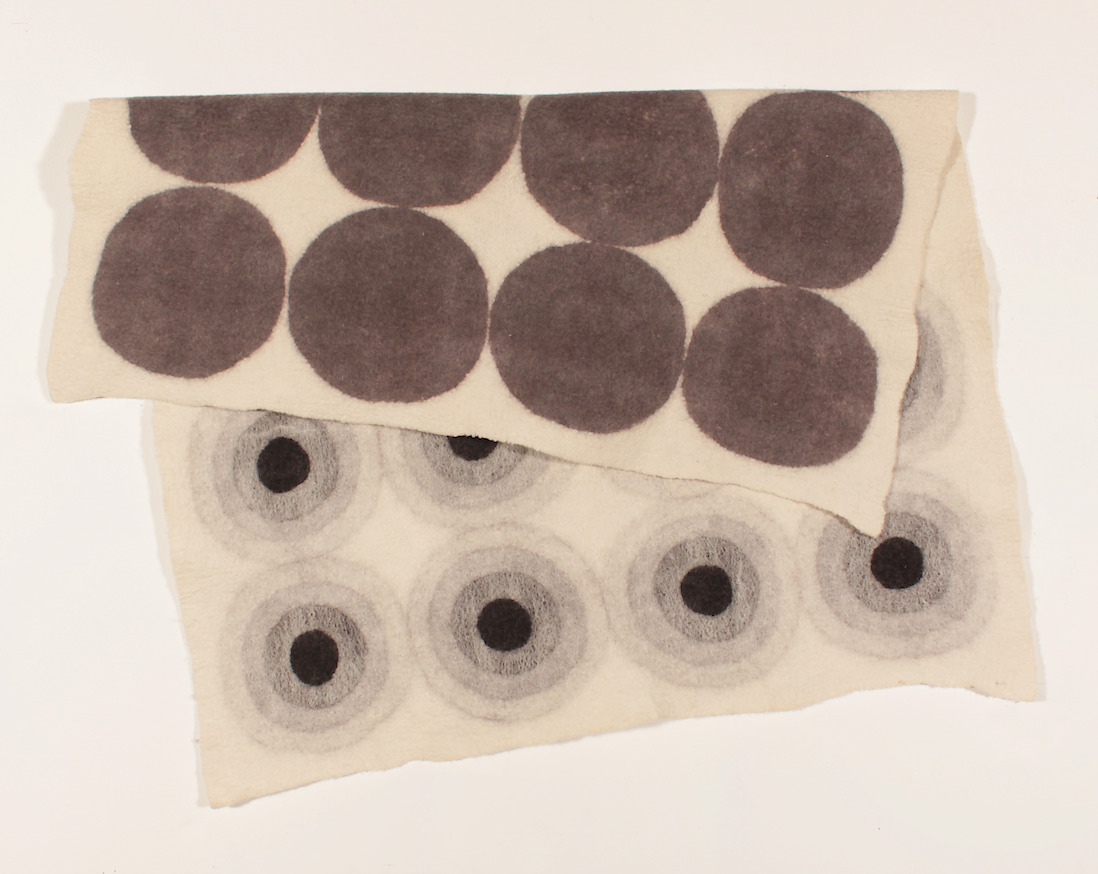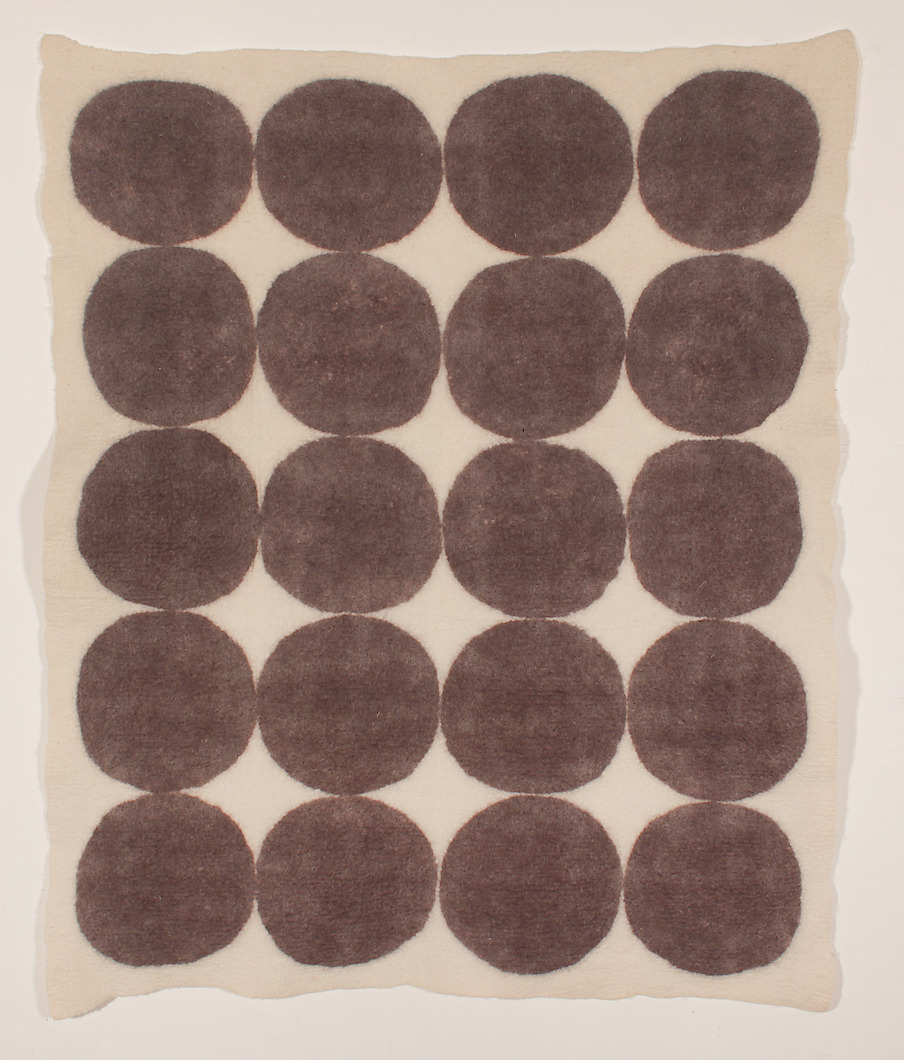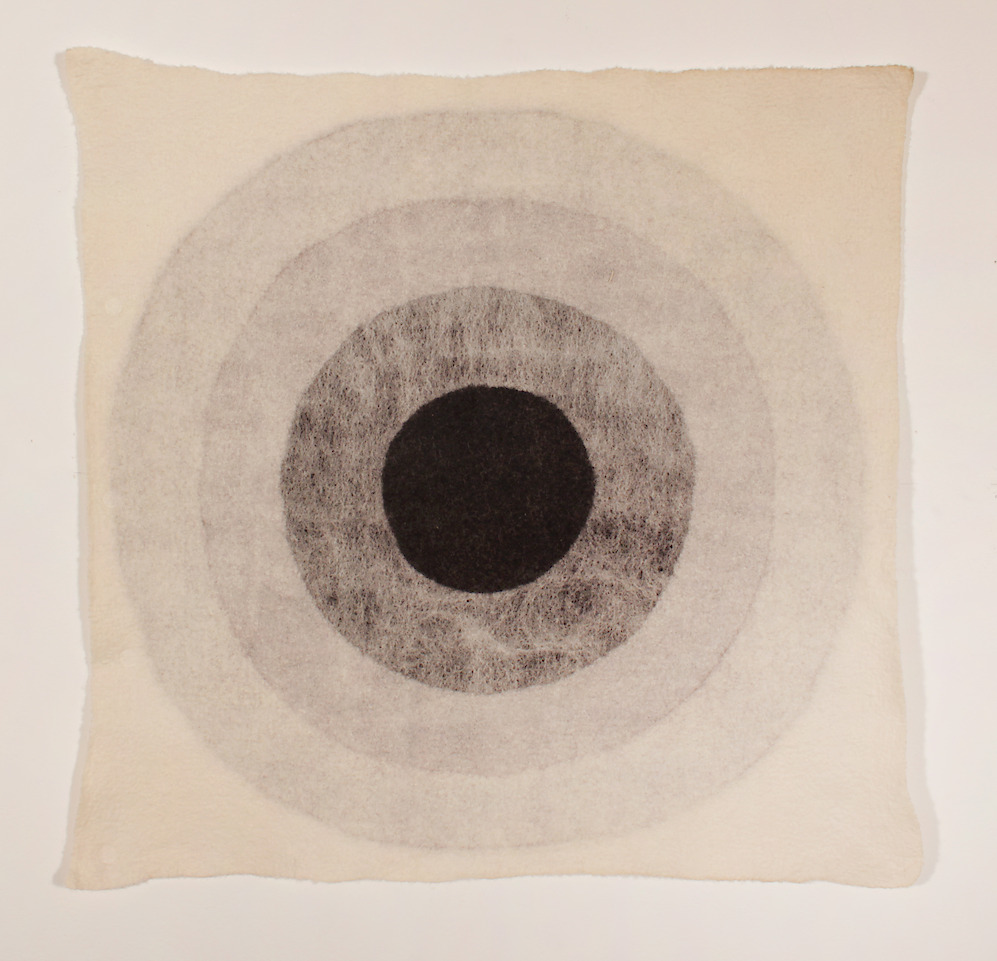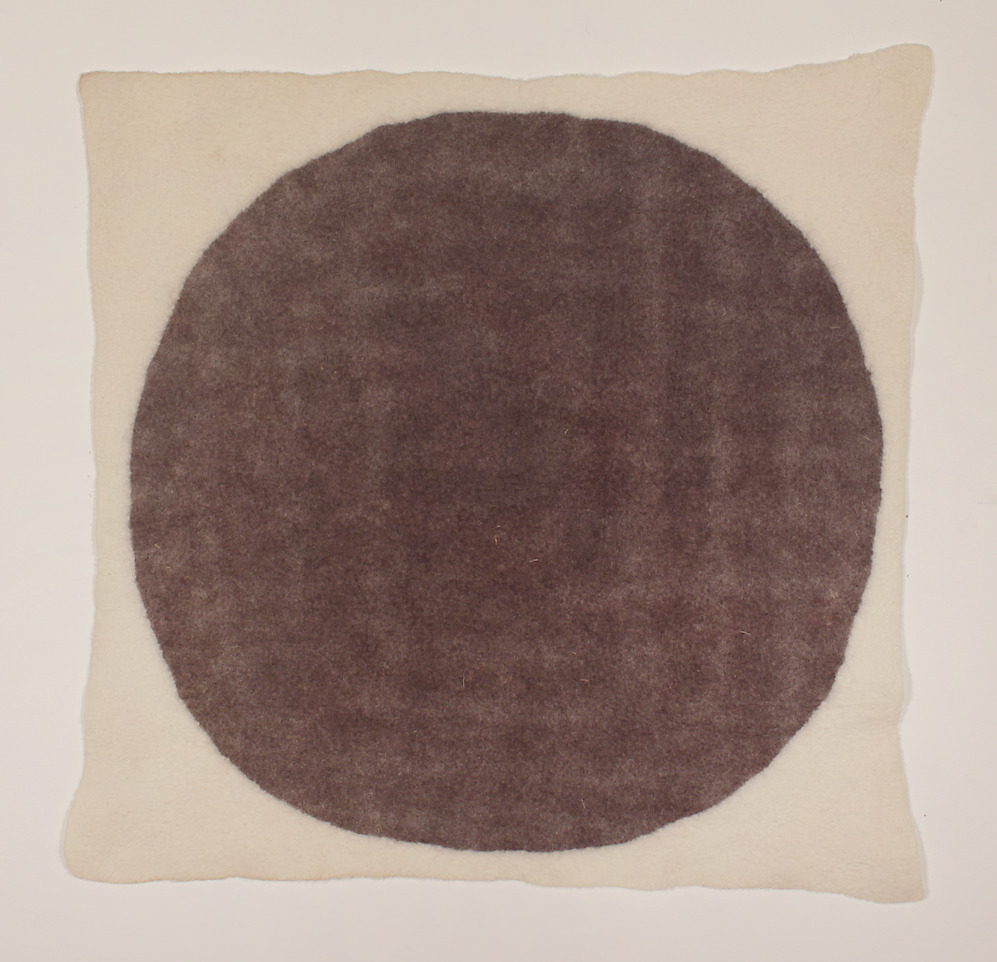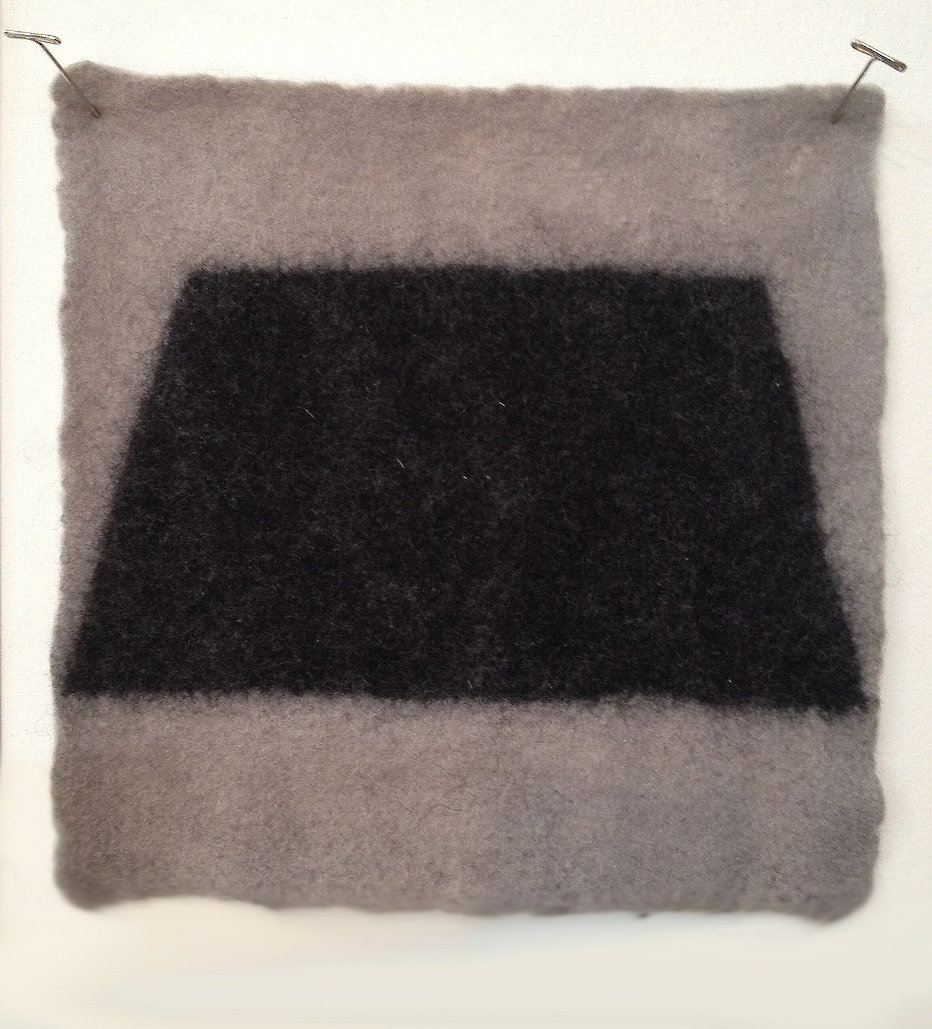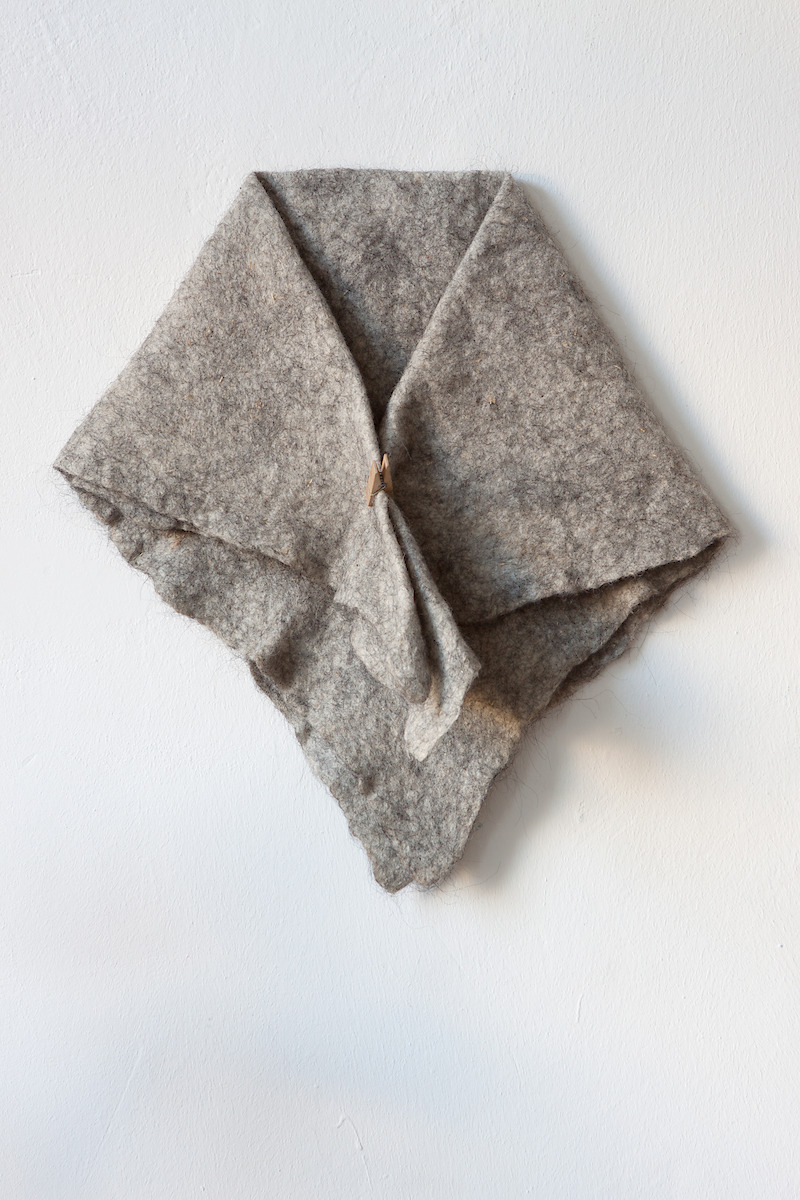Wet Felting, 2013–2016
Material Exploration
Merino wool
For many years I have been experimenting with wet felting as a way to make custom material and garments. Felt is produced by introducting water and soap to the raw protein fibres (wool, alpaca) and agitating them gently by hand. As the scales on the fibres open, they catch on each other and knot together more and more tightly, forming a continuous material. Unlike woven materials that are made from fibres that have been spun and can be disciplined to abide within a system of linearity (the grid), felted fibres, and the material they produce, gain their strength from the fibres organically intertwining with their nearest neighbours, who in turn do the same. While woven and knit fabrics can unravel, felt is unable to do this. Having said this, felt lacks the flexibility and drape of women fabrics. In the process of felting significant shrinkage takes place, producing a garment almost half the size of the pattern first laid out. In exploring my desire to make felted clothing, I constructed a model of myself that is double my size so that the fibre formed over it results in a garment that is custom fit to my body form.
